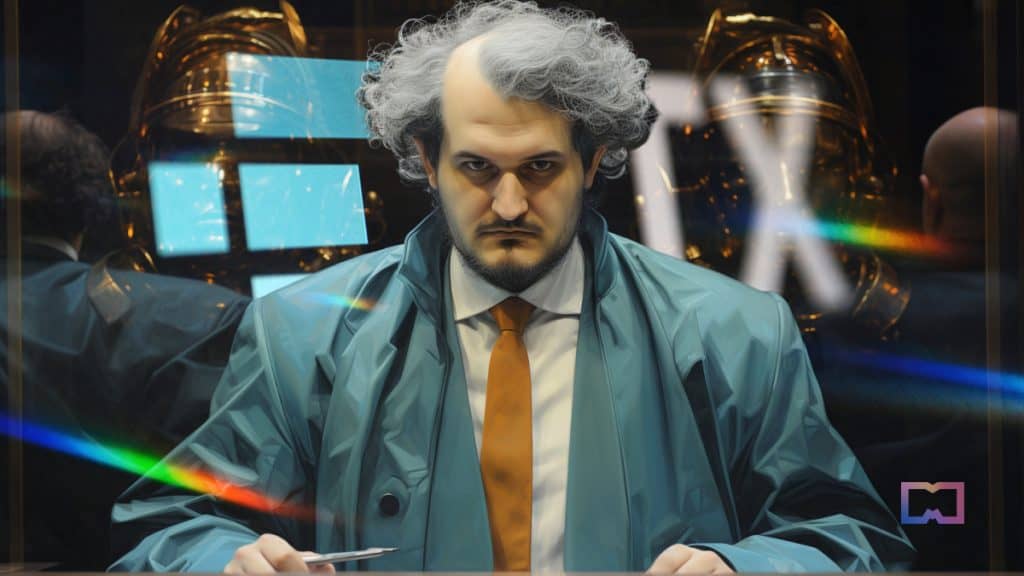The SBF Trial Saga: FTX Founder Battles Court as Matt Huang and Yedidia Face Intense Scrutiny, a Surprise Visit from Martin Shkreli


In Brief
During Sam Bankman-Fried’s (SBF) trial, the court alleged that he intentionally diverted customer funds from FTX to Alameda and subsequently utilized these funds for personal enrichment.
Matthew Huang, co-founder and managing partner of crypto investment firm Paradigm, was also testified during the trial.
In a surprising twist, Martin Shkreli made an unexpected appearance at Sam Bankman-Fried’s trial.

FTX founder Sam Bankman-Fried, finds himself embroiled in a high-stakes legal confrontation as he battles charges in court, related to fraud in connection with the collapse of FTX in November 2022. In a trial that revolved a flurry of dramatic headlines —- hinting at a potential 115-year prison sentence, the legal struggle seems undeniably intense.
During the trial’s initial arguments, the prosecution revolved around a narrative that has been circulating since the events of last November. They alleged that Sam Bankman-Fried intentionally diverted customer funds from FTX to Alameda and subsequently utilized these funds for personal enrichment, including investments in property and influence.
Conversely, the defense asserted that Bankman-Fried acted in good faith and maintained transparency in his actions, even if mistakes were made. They argued that being the CEO of a company that eventually filed for bankruptcy does not constitute a crime.
The trial was framed as “the story of the crypto world between 2017 and 2022” and highlighted the challenges faced by well-intentioned businesses in a volatile market. The defense, compared it to working at a startup terming it “building a plane while you’re flying it,” while emphasizing that a more mature company might have been more risk-conscious — as there was no intent to deceive.
The Dramatic Chronicle of Courtroom Proceedings
Throughout the opening arguments, Bankman-Fried reportedly maintained a stoic demeanor. Notably, attention was drawn to a code backdoor created between FTX and its sister company, Alameda Research — which allowed Alameda to borrow from customers on the exchange without authorization. The defense contended that this system was not clandestine and was accessible to “any senior developer at FTX.”
The opening statements set the tone for the trial, with the defense portraying Bankman-Fried as a well-intentioned entrepreneur who did not engage in fraudulent activities, while the prosecution argued that his wealth and influence were built on deceit.
Assistant US Attorney Nathan Rehn stated, “One year ago, it looked like Sam Bankman-Fried was on top of the world. He had wealth, power, and influence. All of it was built on lies.”
The prosecution’s first witness, London-based broker Marc-Antoine Julliard, who suffered significant losses due to FTX’s collapse, underscored the impact of the exchange’s downfall.
The trial’s second witness, Adam Yedidia, a close associate of Bankman-Fried from MIT, provided critical testimony. Yedidia recounted his time at Alameda and FTX, where he discovered that customer deposits were being utilized without authorization. Yedidia’s testimony refuted the defense’s argument that the expenses, such as the Bahamas penthouse, were normal business practices.
The presented evidence before the jury included screenshots of the FTX sign-up page and the well-known FTX advertisements featuring celebrities like Gisele Bundchen, Tom Brady and Larry David, demonstrating how customers accessed the platform and placed trust in the exchange.
Wowowowow VERY interesting testimony from Sam’s college friend, Adam Yedidia, in the @SBF_FTX trial so far
— Carly Reilly 🍸 (@carlypreilly) October 5, 2023
Adam testified that in June 2022 he expressed concern to Sam about the financial state of FTX and Alameda, essentially asking if they could were OK.
Sam said:
“We were…
Mark Cohen, legal counsel to Bankman-Fried, emphasized that FTX’s collapse was a story of a failed business venture rather than fraud. The defense relied on interpretations of FTX’s terms of service, contending that Bankman-Fried believed it was appropriate to loan customer funds to Alameda based on these terms.
The defense aimed to deflect responsibility for the alleged fraud from Bankman-Fried and questioned the credibility of FTX insiders set to testify. They stressed the sheer scale of FTX’s operations by the time of its collapse, which limited Bankman-Fried’s oversight.
The defense also pointed fingers at Caroline Ellison, CEO at Alameda, suggesting that her decisions contributed to FTX’s downfall by neglecting Bankman-Fried’s instructions to hedge against crypto market downturns.
Key testimony from Yedidia today:
— Martin Shkreli (e/acc) (@wagieeacc) October 6, 2023
Q. In late 2021 what did you learn about the code that you had written for tracking the money Alameda owed to FTX customers for their dollar deposits?
A. I learned that it had a bug.
Q. In plain terms, what effect did this bug have on Alameda's…
Yedidia revealed that he had worked on a project to automate customer deposits and withdrawals, initially unaware that customer funds were flowing into a bank account controlled by Alameda Research. Later, he discovered discrepancies in the account’s balance, raising concerns about the financial stability of the companies.
Judge Lewis Kaplan cautioned the defense against repetitive questioning and ensured privacy during sidebar discussions.
Yedidia's last few questions on direct. Very damaging, emotionally charged.
— Martin Shkreli (e/acc) (@wagieeacc) October 6, 2023
Q. Did you have any conversations with the defendant in November of 2022 about what was happening at FTX?
A. We had a conversation over Signal.
Q. What do you recall about that conversation?
A. I said, I…
Gary Wang, co-founder of FTX, also testified in court, affirming that SBF, the firm’s key figure, granted Alameda Research preferential privileges on the FTX platform. These privileges included accelerated order execution, unrestricted fund withdrawals, and permission to maintain negative balances.
He said that when FTX experienced a technical disruption, Alameda Research successfully withdrew a substantial $8 billion from the platform, alongside an additional $65 billion from its credit lines. Notably, Wang disclosed his ownership of a significant 17% stake in FTX, while SBF retained a dominant 65% ownership. Furthermore, it was revealed that SBF maintains a substantial 90% ownership in Alameda Research, with Wang holding the remaining 10%.
Paradigm Founder Criticizes Bankman-Fried’s Resistance to Investor Involvement
Matthew Huang, co-founder and managing partner of crypto investment firm Paradigm, was also testified during the trial. He caimed that Sam “SBF” Bankman-Fried was reluctant to include investors on FTX’s board of directors. Paradigm and several venture capital firms, including Sequoia, Temasek, and BlackRock who recently faced scrutiny, issued statements regarding their investments in the now-bankrupt crypto exchange.
Huang disclosed that Bankman-Fried believed investor participation on FTX’s board would yield limited benefits. FTX’s board consisted of only three individuals: Bankman-Fried, an unidentified lawyer from Antigua and Barbuda (where FTX was incorporated) and Jonathan Cheesman, a former FTX executive who later stepped down from the board.
Huang recounted conversations with Bankman-Fried preceding Paradigm’s $125-million investment in FTX’s Series B funding round in July 2021. He admitted to not conducting sufficient due diligence and relying heavily on information provided by Bankman-Fried.
Here is the Wang testimony verbatim. It's bad but I don't think it was unexpected or surprising in any way. The interesting part will be HOW SBF was involved in giving these "special privileges" to Alameda. Wang is not a great witness but he's certainly found his voice after…
— Martin Shkreli (e/acc) (@wagieeacc) October 6, 2023
Huang said that the concerns about FTX’s lack of formal structure and its relationship with sister hedge fund Alameda Research troubled him and other investors at Paradigm. They were also wary of preferential treatment given to Alameda by FTX, fearing potential reputational damage to the company.
Surprise Appearance by Martin Shkreli at SBF Trial
In a surprising twist, Martin Shkreli, the notorious “Pharma Bro” who was previously convicted and imprisoned on federal fraud charges, reportedly made an unexpected appearance at Sam Bankman-Fried’s trial. And why not? The parallels between Shkreli’s case and Bankman-Fried’s trial are striking, from the fraud charges to their use of social media posts against them by prosecutors. Both individuals also faced bail revocation due to rule violations.
SBF Jury Analysis – disaster
— Martin Shkreli (e/acc) (@wagieeacc) October 5, 2023
Summary: It looks like Sam's only chance is to convince the cancer banker, aka "NHL" aka "Hong Kong" to acquit. everyone else in that jury is going to convict him.
9 women, 3 men – i generally view this as awful. i could be convinced it's only…
While Bankman-Fried remained composed during the proceedings, it is being reported that Shkreli’s demeanor resembled that of his own trial. He appeared entertained, reminiscent of watching a favorite show.
Shkreli’s presence adds an intriguing layer to the ongoing trial, highlighting the shared elements of their defense strategies, notoriety, and online profiles.
The prosecution’s challenge lies in establishing Bankman-Fried’s deliberate intent to commit fraud and providing concrete evidence to support their narrative. Despite the sensationalized 115-year prison sentence claims, the actual sentencing if convicted, remains uncertain. The outcome now largely depends on the persuasive prowess of both the prosecution and the defense.
Disclaimer
In line with the Trust Project guidelines, please note that the information provided on this page is not intended to be and should not be interpreted as legal, tax, investment, financial, or any other form of advice. It is important to only invest what you can afford to lose and to seek independent financial advice if you have any doubts. For further information, we suggest referring to the terms and conditions as well as the help and support pages provided by the issuer or advertiser. MetaversePost is committed to accurate, unbiased reporting, but market conditions are subject to change without notice.
About The Author
Victor is a Managing Tech Editor/Writer at Metaverse Post and covers artificial intelligence, crypto, data science, metaverse and cybersecurity within the enterprise realm. He boasts half a decade of media and AI experience working at well-known media outlets such as VentureBeat, DatatechVibe and Analytics India Magazine. Being a Media Mentor at prestigious universities including the Oxford and USC and with a Master's degree in data science and analytics, Victor is deeply committed to staying abreast of emerging trends. He offers readers the latest and most insightful narratives from the Tech and Web3 landscape.
More articles

Victor is a Managing Tech Editor/Writer at Metaverse Post and covers artificial intelligence, crypto, data science, metaverse and cybersecurity within the enterprise realm. He boasts half a decade of media and AI experience working at well-known media outlets such as VentureBeat, DatatechVibe and Analytics India Magazine. Being a Media Mentor at prestigious universities including the Oxford and USC and with a Master's degree in data science and analytics, Victor is deeply committed to staying abreast of emerging trends. He offers readers the latest and most insightful narratives from the Tech and Web3 landscape.

















































